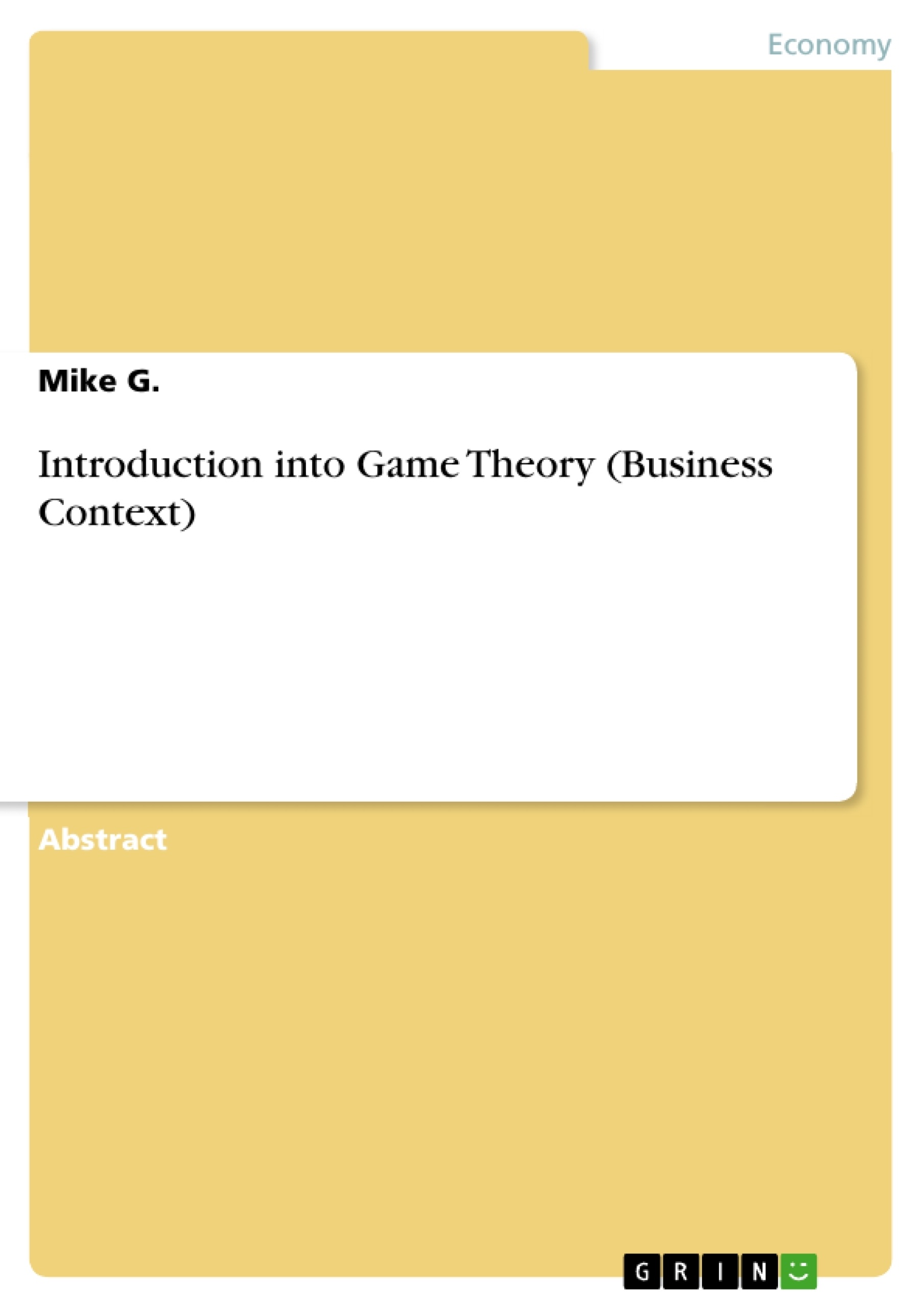Excerpt
Introduction into Game Theory.
Goals of game theory are
Analysis of strategic interactions (competition between companies).
Prediction of human behavior and market outcome.
Determine rational behavior.
Game is strategic interaction between rational players with conflicting interests.
Blue-prints of a game description.
Subsequent or simultaneous timing?
Who knows which information and when?
Pay attention on the following points.
Actions: Don't have to e numerical (e.g., “advertise” or “not advertise”).
Practical example: Stone – Scissor – Paper
First mover vs. late mover.
First mover advantages are psychological standards (consumers taste is related to your product), a higher share of loyal consumers, and higher valued products.
Late mover advantages are learning from mistakes of the first mover, chance to redefine the product category by innovation, low imitation costs (save money for research and development).
Static Games with discrete payoffs (simultaneous actions).
Prisoner's Dilemma.
Creation of a static payoff matrix.
To find the optimal outcome (and action of both players) we have to find the Nash equilibrium.
Assume player two decides for “advertise”, how will player one will react rationally?
Answer this questions in every differentiation and find the solution preferred by both.
→ In this case “advertise” is the best option for both players irrespective how the other player decides.
We say “strategy “advertise” dominates the strategy “don't advertise”” (and v.v.).
Problem / Characteristic of the prisoner's dilemma.
If both decide not do do the action, they will be better-off.
But if this is the case, both have strong incentive to do the action and become even better.
=> Lack of information, trust and certainty leads to a lower, but safer outcome.
The original construction around the prisoner's dilemma.
Police arrested two suspects in a serious crime, but only can prove a small crime.
Interrogate both simultaneously separated from each other and both will confess doing the crime together with the partner.
=> Both will receive the highest penalty because of strong incentive to confess.
Specifics on Nash equilibrium.
If there are more than one Nash equilibria, no dominant strategy is existing.
Even if player 2 has no dominant strategy, he consider the dominant strategy of player 1 and rationally react to it.
Static Games with continuous payoffs.
No longer distinguish “do” or “do not”, now consider e.g. how much has to be invested.
We have to set up the profit (or utility) function of both players and prove the first order condition to identify where they have no incentive to change.
Numerical Example: Advertising Game.
Symmetric firms, each firm can choose whether to invest into advertisement or not.
Advertisement costs are ai ² with i = 1, 2
No other costs, demand is limited, has to be stolen from the competitor.
Price for the products equals
Demand function of company
Profit function of company
First order condition reveals
→ Best response function of company
a1 is negatively responding to a2 therefore the slope is negative (falling reaction curve).
=> Strategic substitutes.
Because of two symmetric companies the demand and profit function for company 2 equals those of company 1 (only with switched indices).
Inserting both variables into the other formula will reveal a1 * = a2* = 1/3
=> Nash equilibrium (invest 33% of one million or the respected unit).
Zero-sum games and mixed strategies.
Explained by the “Matching Pennies” example.
Two players have one euro coin each and choose either to face head or tail up and simultaneously they will display their choice.
If both coins sides match, player 2 receives the coin from player 1 and v.v.
Creating the payoff matrix will lead to no Nash equilibrium.
=> Pure strategies fail to exist.
Directly conflicting interest are the reason: For each choice the other player does, we have incentive to do it different.
Find out if opting for one decision is more likely to win or not (e.g. related to the preferences of the other player).
So far we calculated with possibilities that will occur (p = 1) or which aren't related to our optimal choice; now we deal with real possibilities (p ≤ 1).
To opt for a random choice must be the optimal reaction to the random choice of the opponent.
To make this possible, all possibilities of player 2 must reveal the same yield irrespective to the decision player 1 will do.
=> Find a situation for this to hold and you can calculate the optimal choice of player 1 as well as the expected equilibrium outcome.
Formalize the payoff of player 2 from choosing heads if q is the probability of player 1 to choose head and p the related one for player 2.
- Quote paper
- Mike G. (Author), 2017, Introduction into Game Theory (Business Context), Munich, GRIN Verlag, https://www.grin.com/document/366933
Publish now - it's free






















Comments